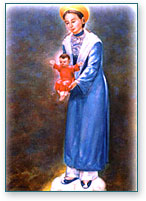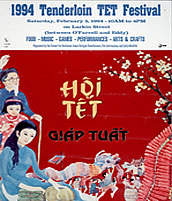 Some Southeast Asians fled their homelands to escape religious persecution and have had to adapt their religious practices to the United States context. In their homelands, indigenous religious practices historically had been challenged by Western missionaries. During the Vietnam War, both indigenous and Christian religious leaders and their followers were persecuted and used as political tools, depending on who was in political control of the countries at any given time. As a result, followers were forced to flee and sustain their practices overseas. Religious communities in the U.S. therefore are not always proportionately reflective of the countries of origin. Some Southeast Asians fled their homelands to escape religious persecution and have had to adapt their religious practices to the United States context. In their homelands, indigenous religious practices historically had been challenged by Western missionaries. During the Vietnam War, both indigenous and Christian religious leaders and their followers were persecuted and used as political tools, depending on who was in political control of the countries at any given time. As a result, followers were forced to flee and sustain their practices overseas. Religious communities in the U.S. therefore are not always proportionately reflective of the countries of origin.
In the U.S., Christian groups sponsored refugees with the intent of converting them. These communities continue to experience transitions, and some face immense challenges in maintaining traditional ceremonies and passing their beliefs onto the next generation.
Southeast Asian Religions
Four philosophies and religions have shaped the religious and spiritual life in Vietnam: Confucianism, Taoism, Buddhism, and Catholicism, with the latter two predominating. Confucianism and Taoism were introduced to Vietnam from China, Buddhism came from India, and Catholicism was introduced by Europeans. Although both the Mahayana Buddhism and Theravada traditions of Buddhism are practiced in Vietnam, there are more followers of Mahayana Buddhism.
Before the introduction of Catholicism, the Vietnamese tended to combine the three Asian religions, known as Tam Giao or the Three Religions, into their daily lives, and did not make distinctions among them. In short, religious practices were woven into the fabric of daily life in Vietnam, and until the introduction of Catholicism, most people did not distinguish between religious practices and traditional cultural practices.
|


